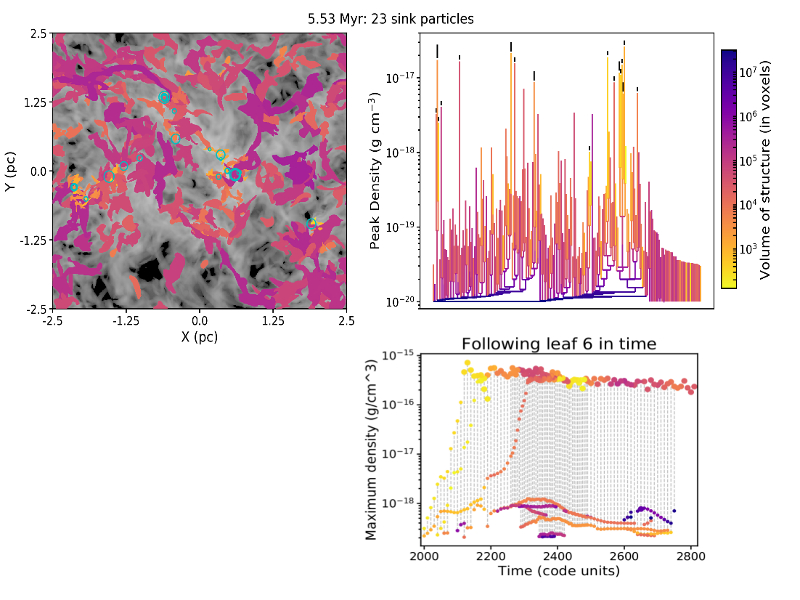| EPoS Contribution |
|
Studying the Time Evolution of Hierarchical Structures in Star Formation Simulations
Rachel Smullen U Arizona, Tucson, US | |
| Understanding star formation has become ever more critical with the recent introduction of instruments such as ALMA and the imminent first light of next generation ground and space telescopes within the next decade. However, there is still ambiguity in the time evolution of the properties of star forming cores and how that may relate to properties such as binarity. We have developed an algorithm to link hierarchical structures in hydrodynamic simulation of star forming regions in time. With this information, we can study the temporal evolution of individual core properties. We investigate conditions that lead to the formation of sink particles and identify properties that correlate with the formation of bound multiple systems of sink particles. This work will help us create a detailed understanding of star formation and will allow us to create a coherent picture of core evolution from beginning to end. | |
 | |
| Caption: The figure shows three panels demonstrating our method. We take density contours of the 3D simulation volume and create a hierarchical dendrogram structure. The upper left panel shows the underlying density structure with the solid contours indicating the highest level structure (leaves) and the cyan circles showing the location of sink particles (pseudo-protostars). The upper right panel shows the dendrogram structure of the volume on the left. Both panels show the simulation at 5.53 Myr. The bottom right panel demonstrates our reconstruction algorithm that links dendrogram structures through time. We plot the maximum density of all progenitors of a sink-hosting leaf from the final time step from start to end of the simulation. Dashed vertical lines indicate the presence of more than one progenitor. All panels are colored by leaf volume in voxels (the number of (1000 AU)3 volumes in each leaf). | |
| Collaborators: K. Kratter, UA/SO, US S. Offner, UT Austin, US A. Lee, UT Austin, US |
Suggested Session:
Cores |

